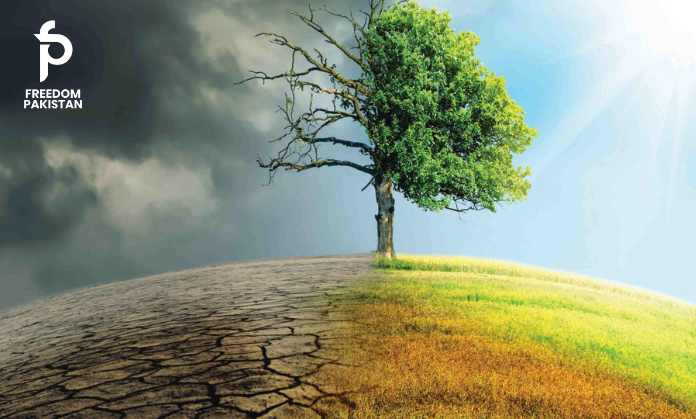The planet is sending urgent and unmistakable signals that the climate crisis is accelerating at an alarming rate. Over 60 leading scientists from around the world have come together to deliver a powerful warning: key climate indicators such as greenhouse gas emissions, global surface temperatures, and sea-level rise have reached unprecedented levels, pushing the Earth into dangerous and uncharted territory. These findings, published in a recent peer-reviewed update, highlight the critical need for immediate and sustained global action if humanity hopes to avoid catastrophic environmental, economic, and social consequences.
Record-Breaking Greenhouse Gas Emissions in 2024
One of the most significant markers of the climate crisis is the relentless increase in greenhouse gas (GHG) emissions. According to the scientists’ report, global emissions from the burning of fossil fuels—such as coal, oil, and natural gas—and deforestation hit a new record high in 2024. Over the past decade, emissions have averaged 53.6 billion tonnes of carbon dioxide equivalent (CO₂) per year. To put this in perspective, this equates to approximately 100,000 tonnes of greenhouse gases being emitted every single minute.
This level of pollution is unprecedented and has been a major driver behind the rapid warming of the planet. Fossil fuel combustion accounts for the majority of these emissions, with industries, transportation, and energy production being the largest contributors. At the same time, deforestation, especially in tropical regions, releases vast amounts of stored carbon into the atmosphere, further exacerbating the problem.
The continuous rise in GHG emissions underscores a failure to implement effective policies to reduce reliance on fossil fuels and halt large-scale forest destruction. Despite international agreements and national pledges, global emissions remain stubbornly high, undermining efforts to mitigate climate change.
Earth’s Surface Temperature Surpasses 1.5°C Threshold
Perhaps the most alarming milestone revealed by the scientists is the fact that Earth’s average surface temperature in 2023 surpassed 1.5°C above pre-industrial levels for the first time ever. This threshold is a critical benchmark established by the Paris Agreement, an international treaty adopted in 2015 that aims to limit global warming to well below 2°C, preferably to 1.5°C, to avoid the worst impacts of climate change.
Exceeding 1.5°C is not just a symbolic boundary—it represents a tipping point beyond which climate impacts become significantly more severe and potentially irreversible. At this level of warming, the world faces increased frequency and intensity of extreme weather events such as heatwaves, wildfires, droughts, and hurricanes. Crop yields are threatened, water scarcity intensifies, and ecosystems suffer widespread damage.
The scientists warn that surpassing this threshold permanently locks in dangerous climate feedback loops. For example, thawing permafrost releases methane, a potent greenhouse gas, which in turn accelerates warming. Coral reefs are increasingly dying due to bleaching, threatening marine biodiversity and fisheries. Human health risks, economic damages, and displacement of communities also escalate dramatically.
This sobering reality serves as a wake-up call for policymakers and societies to step up their climate ambitions and prioritize emission reductions to prevent the world from spiralling into a climate catastrophe.
Extreme Weather Events Increase
The frequency and intensity of hurricanes, wildfires, floods, and droughts have significantly increased in recent decades. For example, 2023 saw record-breaking wildfires in Australia and Canada, and severe flooding in Europe and Asia. These events cause billions in damages and threaten millions of lives.
Solar Power Becomes Pakistan’s 1st And Largest Source of Electricity
You Can Also Read This
The Carbon Budget Is Running Out Fast
Central to understanding the urgency of the climate crisis is the concept of the carbon budget. This is the maximum cumulative amount of carbon dioxide that can be emitted while still maintaining a likely chance (usually two-thirds probability) of limiting global warming to 1.5°C above pre-industrial levels.
The new scientific assessment estimates that humanity’s remaining carbon budget is perilously low—at current emission rates, it will be exhausted within the next two years. This means that if governments and industries continue to emit greenhouse gases at today’s pace, the planet will cross the 1.5°C warming threshold imminently, making it impossible to avoid more severe climate impacts.
Once this budget is depleted, the chances of stabilizing the climate at safe levels diminish drastically. Crossing this limit could trigger abrupt climate changes that are difficult, if not impossible, to reverse, such as the collapse of major ice sheets, widespread droughts, and loss of biodiversity.
This tight timeline challenges global leaders to drastically accelerate efforts to cut emissions through policy reforms, clean energy transitions, and conservation efforts. It also calls for immediate investment in carbon capture and storage technologies to help remove CO₂ from the atmosphere.
Rising Sea Levels Threaten Coastal Communities
Another critical consequence of the warming climate is rising sea levels. The report highlights that melting ice sheets in Greenland and Antarctica, alongside shrinking glaciers and thermal expansion of seawater, are contributing to a steady increase in global sea levels. This poses an existential threat to millions of people living in coastal regions, many of whom face risks of flooding, storm surges, and land erosion.
Sea level rise is not a distant problem—it is already happening and accelerating. Coastal cities such as Miami, New York, Mumbai, and Jakarta are experiencing increased flooding events, forcing costly infrastructure adaptations and displacing vulnerable communities. Small island nations face the possibility of becoming uninhabitable within decades, threatening their very existence.
Data from polar research stations show that ice melt rates have accelerated beyond previous projections, which means that sea level rise could exceed worst-case estimates if global warming is not rapidly curtailed. This further underscores the urgency to reduce emissions and enhance climate resilience through adaptive measures like improved coastal defences and sustainable urban planning.
Economic Costs of Inaction
The economic impact of unchecked climate change could reach tens of trillions of dollars by mid-century, due to damage to infrastructure, agriculture, health, and forced migration. According to the Global Commission on Adaptation, investing $1.8 trillion globally in adaptation measures could generate $7.1 trillion in net benefits.
The Urgency of Global Climate Action
The overwhelming scientific evidence makes it clear: the time to act is now. International organizations such as the United Nations and the Intergovernmental Panel on Climate Change (IPCC) have repeatedly emphasized the need for accelerated, ambitious climate action to keep warming under control.
Achieving this requires coordinated efforts across nations, industries, and communities. Key strategies include:
-
Phasing out fossil fuels and shifting rapidly toward renewable energy sources like solar, wind, and hydroelectric power.
-
Enhancing energy efficiency in buildings, transportation, and manufacturing.
-
Protecting and restoring forests and other natural carbon sinks.
-
Investing in innovative technologies for carbon capture and storage.
-
Supporting vulnerable countries in adapting to climate impacts through finance and technology transfer.
-
Strengthening international cooperation through climate agreements and regular global summits like COP30.
- Failure to act decisively will lead to escalating costs, loss of lives, and irreversible damage to the planet’s ecosystems.
Climate Feedback Loops
Positive feedback loops, such as melting permafrost releasing methane or reduced Arctic ice decreasing Earth’s reflectivity (albedo), can accelerate warming beyond current projections. Methane is over 25 times more potent than CO₂ over a 100-year period, making permafrost melt a serious risk.
Conclusion: The Time to Act Is Now
The collective warning from the world’s top climate scientists is unequivocal: climate change indicators are flashing bright red, and humanity is at a crossroads. Greenhouse gas emissions are at record highs, the planet’s temperature has crossed dangerous thresholds, and the carbon budget to keep warming in check will be depleted within years.
The stakes could not be higher. Without urgent and comprehensive action, the world faces intensified natural disasters, food and water insecurity, displacement of millions, and profound economic disruption. Yet, this moment also offers an opportunity—to transform energy systems, protect nature, and build a sustainable future that benefits people and the planet alike.
Governments, corporations, and individuals must rise to the challenge. By embracing clean technologies, adopting sustainable lifestyles, and holding leaders accountable, we can turn the tide on climate change. The warnings are clear; the path forward demands courage, innovation, and global solidarity. The time to act is now.




